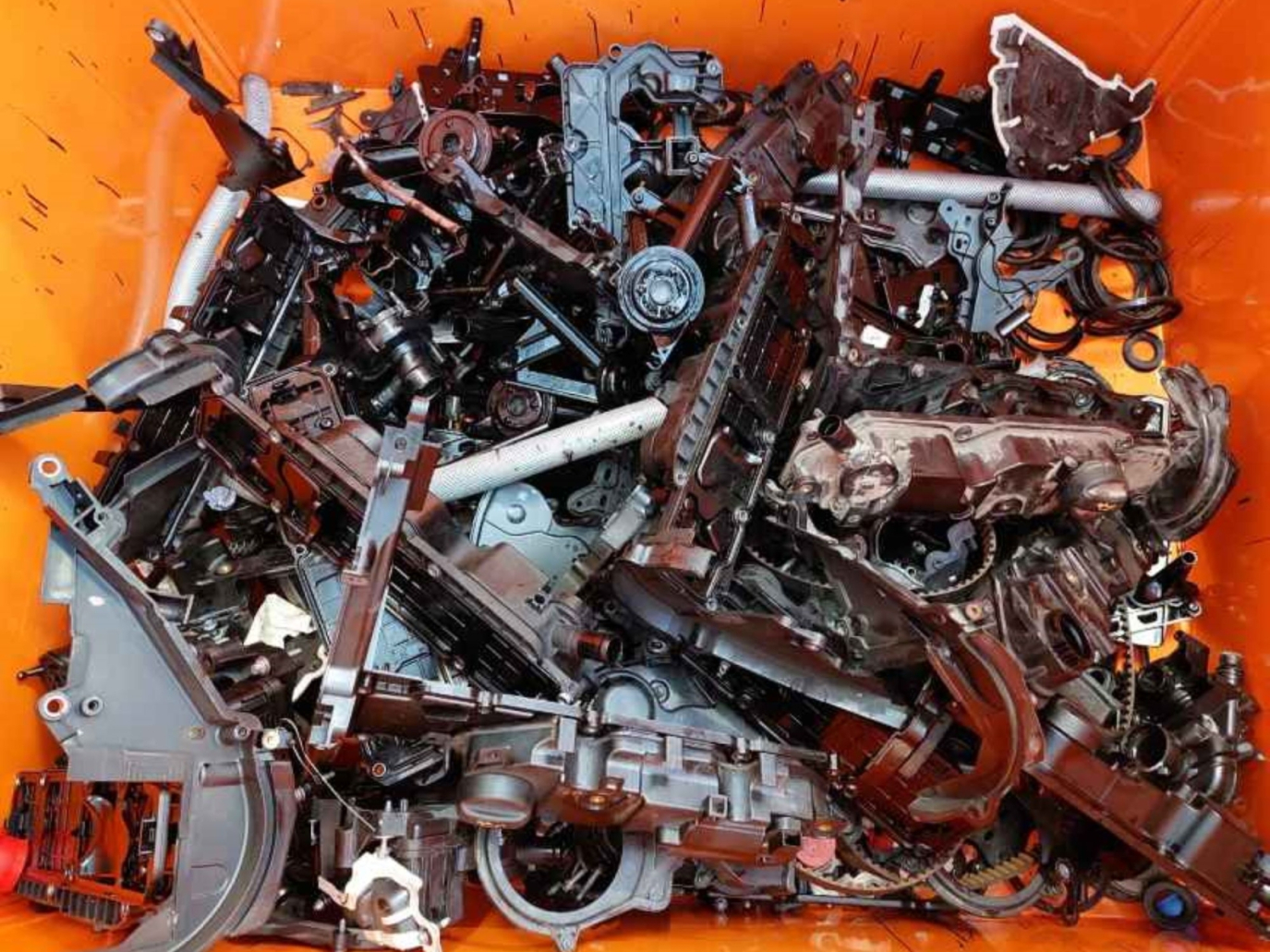The Stellantis Group has decided to focus on circularity. They announced it a year ago, and the official ribbon-cutting day came on November 23. The first hub in Europe dedicated to the automotive circular economy with a 360-degree approach officially opened its doors in Turin.
Behind the gates of Mirafiori, right there where Italian automotive history was made, a new chapter is now beginning, that of SUSTAINera: 73,000 square meters of facility, much of it converted from old buildings, to disassemble vehicles, regenerate engines and batteries, recondition used cars and recycle materials.
“Renewing and building the future: that's the prospect opening up for Mirafiori,” Stellantis chairman John Elkann commented during the inauguration, responding to concerns about the ongoing relocation of the multinational company's production lines. But polemics and labor disputes aside, there is no doubt that the newborn hub for the circular economy marks a new path for the automotive industry.
Towards a circular automotive economy
Decarbonizing the transportation sector is not just a matter of transitioning up to electric. Today, well over 85 million motor vehicles are produced around the world each year: a consumption of resources and energy that could be greatly limited through a circular approach.
The Stellantis Group alone, the fourth largest in the world comprising 14 brands (in addition to Fiat we have Abarth, Alfa Romeo, Chrysler, Citroën, Dodge, DS Automobiles, Jeep, Lancia, Maserati, Opel, Peugeot, Ram, and Vauxhall) sold more than 5.8 million vehicles in 2022, which despite a sharp drop from 2021 (-9.4 percent) remains an important share of the market.
With these numbers, clearly, from the perspective of ensuring a more stable supply of raw materials at less volatile prices, the circular economy becomes an indispensable strategy, especially in an industry like automotive, where the transition to electric will mean growth in demand for critical raw materials. Stellantis is therefore gearing up.
“Here, in a historic place for the automobile, we are today building the future,” said CEO Carlos Tavares before the ribbon-cutting ceremony. “We are creating a sustainable business model that can last for a long time, moving from a linear to a circular approach, from efficiency to effectiveness.”
“A model,” he adds, “that not only relieves pressure on the planet, but is also competitive and more profitable than the traditional one.” Indeed, in Stellantis' plans, the business unit dedicated to the circular economy is expected to generate as much as 2 billion euros in profits by 2030.
The SUSTAINera model
The SUSTAINera model was explained in detail by Alison Jones, senior vice president for circular economy at Stellantis. “We want to manufacture sustainable and affordable products at competitive prices, but without compromising on quality,” she began. "Our circular strategy is the 4Rs: Reman (regenerate), Repair, Reuse, and Recycle. We aim for vertical integration and closing the loop for all materials, with cycles as local as possible to reduce logistics costs and speed up deliveries to customers.” And not least to cut emissions, as the group has set a rather ambitious goal of reaching net-zero in 2038.
In its new circular course, Stellantis has forged partnerships. With Galloo, firstly, with whom the company has created the joint venture SUSTAINera Valorauto SAS to manage end-of-life vehicles; with Orano, for pre-treatment in the process of recycling electric vehicle batteries to recover cobalt, nickel and lithium; and with Qinomic for electric retrofitting of light commercial vehicles. While the collaboration with B-Parts, Italy's largest online retailer of automotive parts, is being strengthened, to which disassembled and remanufactured parts will go at the Mirafiori hub, where the aim is 50,000 remanufactured parts by 2025 and 150,000 by 2030.
Inside the Mirafiori hub
With a 40 million euro investment, the hub that was established at Mirafiori's Gate 16 in the historic Via Settembrini plant is itself the result of a circular approach. In fact, of the 73,000 square meters of floor space, about 55,000 come from the conversion of an unused facility; the renovation harnessed more than 5,000 tons of metal from obsolete resources, and the same machinery was salvaged from other locations.
The massive spaces in which we move for the press tour hint at Stellantis' prospects for full-scale operation of the hub. Currently, 170 skilled workers are employed, but the idea is to have 550 by 2025.
The first area we encounter is Reman, or the remanufacturing or refurbishing of used components. This is where endothermic engines, gearboxes and batteries from electric vehicles arrive from the certified workshop circuit to be disassembled, cleaned and remanufactured. “We manage to recover about 60 percent of the material, and the rest we supplement with new parts to maintain the starting quality standards,” explains Marco Alessandria, one of the engineers in charge of the hub. The remanufactured parts will then be resold in the after sale circuit, while the discarded and no longer usable materials (if metals) will end up in the foundry, then re-enter the production cycle as a secondary raw material.
The Sorting area, on the other hand, is responsible for sorting incoming parts from the workshops, directing them to two streams: remanufacturing (see above) and recycling. Stellantis estimates that about 2.5 million used parts, also known as “removed parts,” will go to the plant's remanufacturing and recycling activities by 2025, rising to 8 million parts processed by 2030. “Instead, in a different area,” continues engineer Alessandria, “all parts that are not engines, gearboxes or batteries arrive. These parts are divided into 40 'families' and sent to our external partners who take care of recycling them. The recycled material is then bought back by Stellantis, but in the future the plan is to do the recycling in-house.”
Finally, we come to the areas of vehicle dismantling, where for now they plan to process 10,000 cars a year for parts for resale, and reconditioning, where they repair 66 vehicles a day for a total of 15,000 a year (for now only vehicles with mileage up to 30,000 km). These are all Stellantis-certified used cars, which re-enter the market through the Spoticar platform.
Perspectives: ecodesign, traceability, EPR
While there is already plenty on the plate, the system set up by Stellantis still has room for improvement, however. “For example, upcoming goals include closing the loop on plastic components,” Alison Jones tells Renewable Matter. A challenging goal, given that the complex mix of materials a car is made of, makes it difficult to reuse recycled plastics with varying degrees of purity.
And that's where we get to the issue of ecodesign, which, Jones explains, is worked on through continuous feedback: “During disassembly and remanufacturing of vehicles, if you identify areas where the design can be improved, you communicate that to the design department.” In a more avant-garde perspective, interesting pilot projects have actually already been carried out, such as the Citroen Oli concept car: “a car made with more sustainable and recycled materials and easily replaceable components to extend its useful life.”
Another point to focus on in the near future is the traceability of the supply chain and materials. “A major challenge, especially considering the volumes of the Stellantis group and the global reach of its supply chains. But we have to work on it,” Jones admits.
Finally, there is the hot issue of extended producer responsibility systems, currently being discussed at the European Commission for the automotive sector as well. “As Stellantis, we are participating in the discussion tables,” Alison Jones tells us. “We believe that an EPR scheme for the automotive sector should take the form of an individual system. With SUSTAINera, we have created a system that allows us to operate independently and take responsibility for the take-back of our customers' used vehicles, allowing us to process the recovery of components and materials in-house. This is our solution,” he concludes, “and it is what we have proposed at European discussion tables.”
This article is also available in Italian / Questo articolo è disponibile anche in italiano
Images: Giorgia Marino



